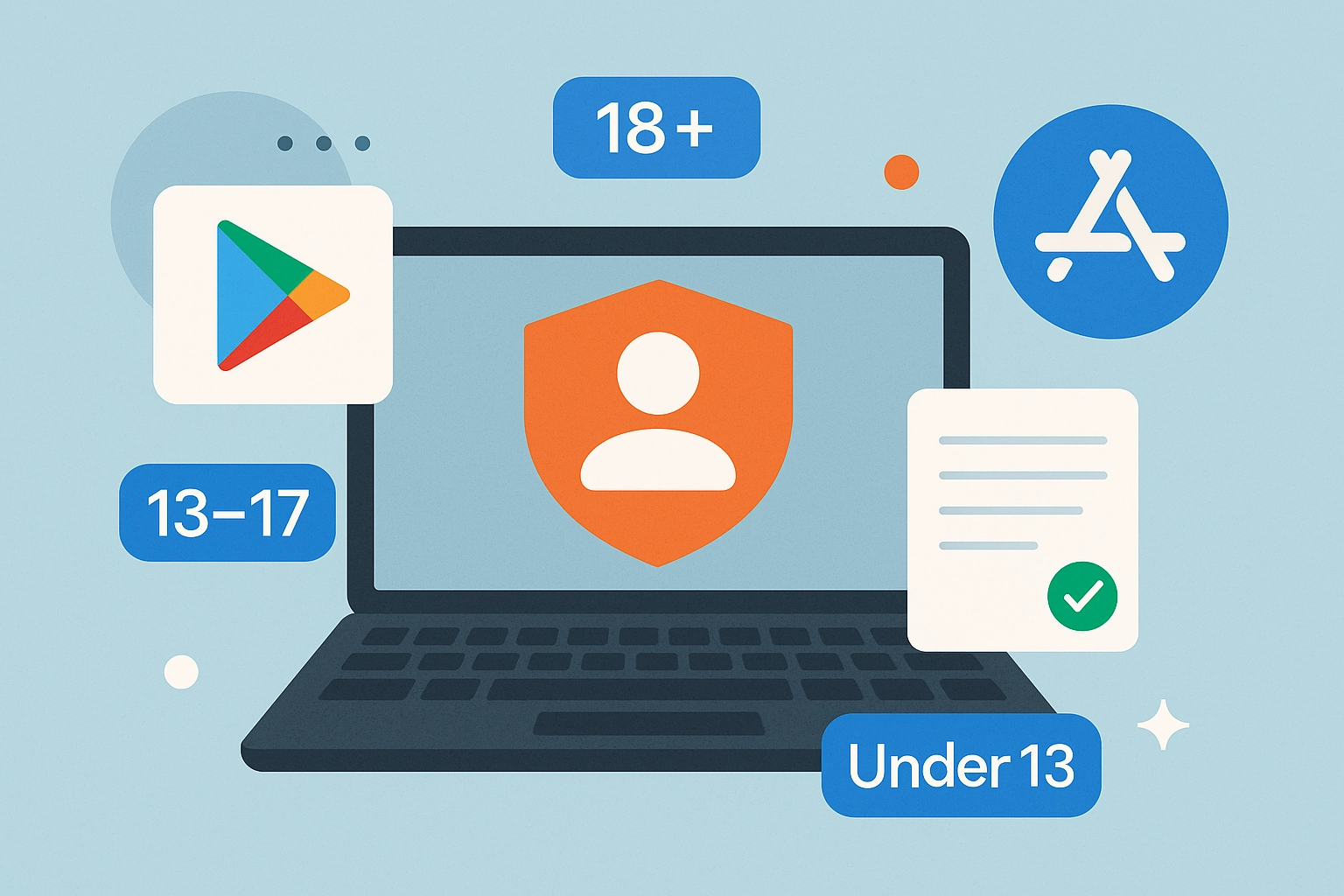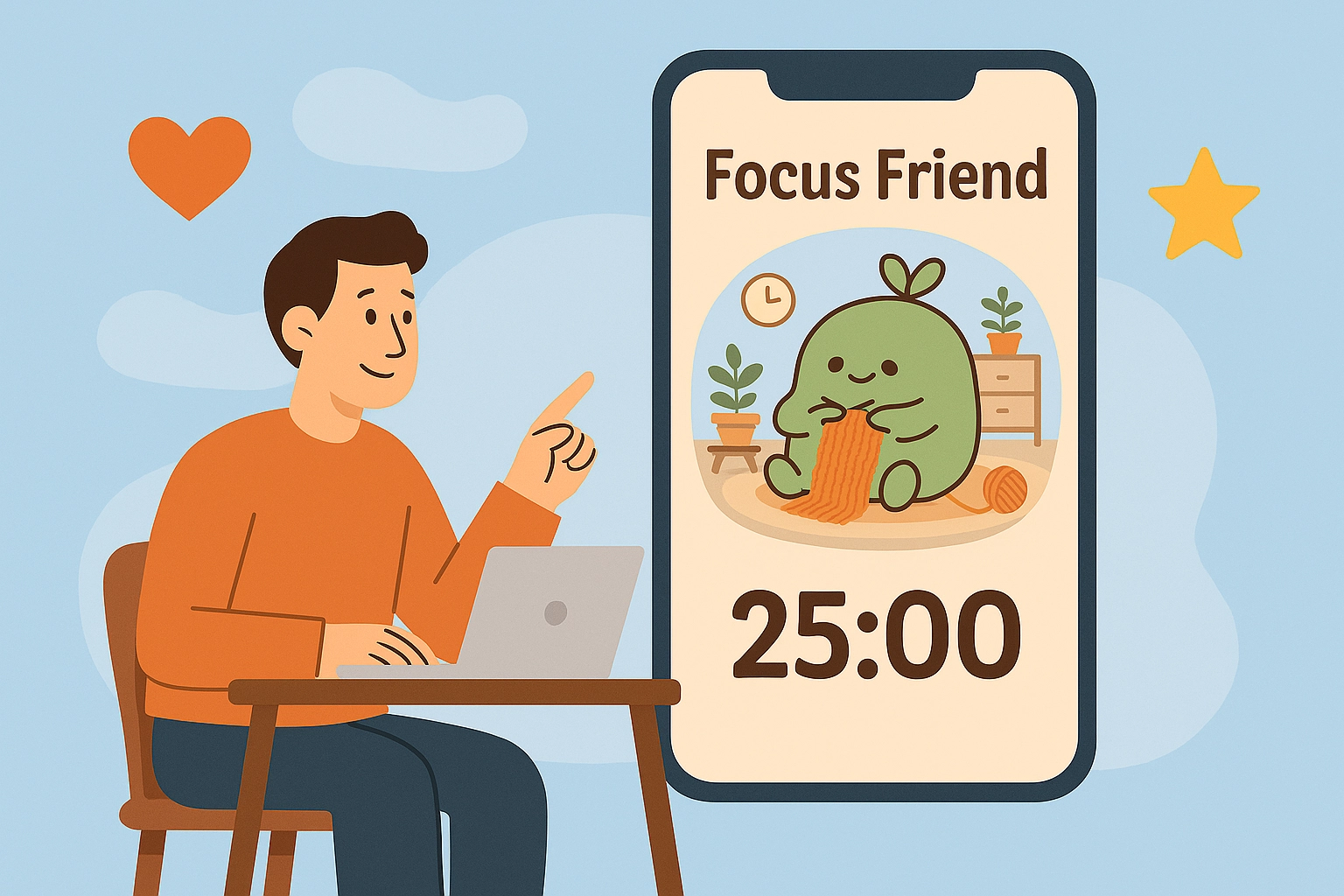The Global Rise of Age Verification for Apps: What Devs Need to Know About Google & Apple APIs
Published 15th October, 2025 by Stuart Hall In 2025, age verification moved from policy debate to reality. Around the world, governments are introducing new laws to protect minors online with age verification, and platforms like Google and Apple are responding with built-in tools to help developers comply. Whether your app serves gamers in the U.S., students in Japan, or social communities in Europe, it’s clear: age assurance and parental consent are becoming essential for responsible app development. This post breaks down the global trend, the new APIs from Apple and Google, and what you can do now to future-proof your app.
In 2025, age verification moved from policy debate to reality. Around the world, governments are introducing new laws to protect minors online with age verification, and platforms like Google and Apple are responding with built-in tools to help developers comply. Whether your app serves gamers in the U.S., students in Japan, or social communities in Europe, it’s clear: age assurance and parental consent are becoming essential for responsible app development. This post breaks down the global trend, the new APIs from Apple and Google, and what you can do now to future-proof your app. In this overview you'll learn:
- Why Age Verification is on the Rise Globally
- Who’s Responsible? It Depends Where Your Users Are
- How Platforms Are Responding
- What Developers Need to Build
- Roadmap: Preparing for a Regulated Future
- Bottom Line - Build once, comply everywhere.
Want to generate best-practice review replies in seconds?
Try Appbot AI Replies, free for 14 days →Why Age Verification is on the Rise Globally
Countries are converging on the same goal, which is ensuring that children and teens interact with digital products safely and transparently. But the implementation details vary by region.
- United States: States such as Texas (SB 2420), Utah (SB 142), and Louisiana (HB 570) have passed App Store Accountability Acts, requiring app stores to verify user age and ensure parental consent for minors. California’s Digital Age Assurance Act (AB 1043) extends these ideas to devices and apps at setup, effective 2027.
- Australia: The Online Safety Amendment (Social Media Minimum Age) Act 2024 takes effect in December 2025, mandating that social platforms take “reasonable steps” to prevent under-16s from creating or maintaining accounts.
- Japan: Under Japan’s Online Safety Act, platforms and user-to-user services likely accessed by minors must deploy age-estimation systems, perform child-access risk assessments, and mitigate harmful content exposure.
Different jurisdictions, same direction: digital safety-by-design for children is becoming law.
Who’s Responsible? It Depends Where Your Users Are
Responsibility frameworks vary. In the U.S., new state laws like those in Texas, Utah, and Louisiana make app stores and developers co-responsible for protecting minors online. App stores are required to collect and verify age or consent information, while developers must act on that data responsibly, for example, by gating content, disabling purchases, or managing consent.
In some regions and countries, responsibility is placed primarily on platforms (like Australia’s social-media regulations or Japan’s Online Safety Act). It is likely that app stores will mandate compliance from developers to mitigate their own risk.
The direction, is the same everywhere: digital safety and age assurance are becoming shared obligations across the ecosystem. As similar laws expand, app stores are expected to require developers to integrate platform age-verification APIs, honor consent revocations, and use collected data solely for compliance.
How Platforms Are Responding
Both Google and Apple are taking proactive steps to help developers align with these new requirements.
Apple: Declared Age Range API
Apple introduced the Declared Age Range API as part of its child-safety initiative earlier this year. It lets parents share an age range (for example, “under 13” or “13–17”) with apps, but without revealing a date of birth. Developers can adjust features, in-app purchases, and content accordingly.
Key Features
- Parents can share a declared age range for their child (e.g. “under 13,” “13–17”) with apps, avoiding direct date-of-birth collection.
- The App Store now requires enhanced metadata: developers must disclose whether the app includes UGC, ads, in-app purchases, or other potentially sensitive content.
- App listings display expanded information for parents, including age ratings and content descriptors.
- Built-in parental controls allow parents to manage, revoke, or adjust permissions for shared data.
- Apple has updated its age rating tiers (4+, 9+, 13+, 16+, 18+) and mandates more transparent content disclosures to help families make informed choices.
The Declared Age Range API reinforces Apple’s position as a leader in privacy-first compliance. Instead of requiring developers to collect or store sensitive user data, Apple’s system provides a platform-managed, privacy-preserving framework for age-based logic. This approach not only supports emerging U.S. and global age-verification laws but also aligns with Apple’s broader “Safety by Design” principles, empowering parents, reducing developer risk, and ensuring a consistent compliance baseline across the App Store ecosystem.
Watch Apple’s WWDC session “Meet the Declared Age Range API” for a detailed walkthrugh of how it works and how to implement it in your app. Check out the Apple Declared Age Range API documentation here.
Google: Play Age Signals API (Beta)
Google has announced the Play Age Signals API (beta), a tool designed to help app developers comply with the various age verification laws. Early access limited to select developers during the beta phase.
Key Features
- Provides an age bracket signal for each user (e.g., under 13, under 18, adult), allowing apps to adapt features accordingly.
- Enables content gating, purchase restrictions, or parental consent flows without directly collecting personally identifiable information.
- Supports compliance with U.S. state-level mandates such as Texas’s App Store Accountability Act (SB 2420) and Utah’s App Store Accountability Act (SB 142).
- Integrates with existing Google Play Families policies and User Data requirements, ensuring developers adhere to child-safety standards already in place on the platform.
The Play Age Signals API represents Google’s first cross-platform attempt to standardize age assurance while maintaining user privacy. By keeping sensitive data (like date of birth) within the Play ecosystem, Google reduces the compliance burden on developers, but also increases expectations that developers act on the provided age data responsibly.
Check out the Google Play Age Signals API (Beta) documentation here.
What Developers Need to Build
To stay compliant across multiple jurisdictions and platforms, developers should prepare to:
- Implement Age-Aware Logic: Use API-based age ranges to adapt content, features, and monetization flows.
- Manage Parental Consent: Link child and guardian accounts, track consent status, and handle revocations.
- Disclose Transparently: Keep App Store and Play Store metadata accurate for content, ads, and UGC.
- Design for Privacy: Store the minimum required data, use age info only for compliance, and delete after use.
- Plan Cross-Platform Abstraction: Build a single interface that interprets both Apple and Google age signals.
Building these systems now means you won’t be racing to retrofit compliance later.
Roadmap: Preparing for a Regulated Future
- Seek legal advice to understand which regulations apply to your apps and how regional differences (state, federal, or international) affect your compliance obligations.
- As soon as possible, get access to Apple and Google’s APIs.
- Audit onboarding and feature-gating flows for age logic.
- Review content metadata and age ratings on both app stores.
- Simulate global edge cases: parental consent revoked, incomplete signals, or differing age tiers.
- Work cross-functionally: involve product, UX, and QA teams right from the start to ensure consistent, compliant implementation.
Bottom Line - Build once, comply everywhere.
The era of age-aware, consent-driven app development is here. From Texas to Tokyo, regulators are demanding safer digital spaces for minors and developers are now part of that solution.
Apple and Google’s APIs mark a turning point where age assurance becomes an integrated layer of app design, not an afterthought. Design age-aware, consent-driven experiences today, and your app will be ready for whatever the next wave of digital-safety laws brings and help you build more trustworthy, family-safe apps. The earlier you adapt, the smoother the transition will be.
Disclaimer: This article is for information only and isn’t legal advice. Laws and guidance on age assurance change quickly; consult qualified counsel for requirements that apply to your apps.
Want to generate best-practice review replies in seconds?
Try Appbot AI Replies, free for 14 days →Where to from here?
- Discover effective strategies for app review management to efficiently handle and leverage user feedback.
- Unlock valuable insights into user sentiment with our powerful sentiment analysis tool for informed decision-making.
- Simplify your review tracking process with our efficient review aggregator, providing a centralized view of user feedback.
- Engage with your users effectively by crafting thoughtful responses with our convenient Reply to App Store Reviews feature.
About The Author

Stuart is Co-founder & Co-CEO of Appbot. Stuart has been involved in mobile as a developer, blogger and entrepreneur since the early days of the App Store. He built the 7 Minute Workout app in one night and blogged the story of growing the app to 2.3 million downloads before exiting to a large fitness device company. Previously he was the co-founder of the Discovr series of applications which achieved over 4 million downloads. You can connect with him on LinkedIn.
Enjoying the read? You may also like these
 How Hank Green's Focus Friend App is Winning Hearts (and Ratings)
How Hank Green's Focus Friend App is Winning Hearts (and Ratings) Discover how Hank Green’s Focus Friend app is winning over users with its cozy design, emotional resonance, and sky-high ratings. A deep dive into what’s driving its viral success.
WWDC 2025 focused on AI-powered developer tools, including Xcode 16 with built-in ChatGPT, Apple’s Foundation Models for on-device intelligence, and new APIs to build faster, smarter, and more privacy-first apps.
Learn how Apple’s Product Page Optimization lets you A/B test app store screenshots, videos, and icons to improve conversion rates and app installs.
Plan ahead for iOS 26. See submission windows, expected release date, and pro tips for app approval during Apple’s busiest week.


